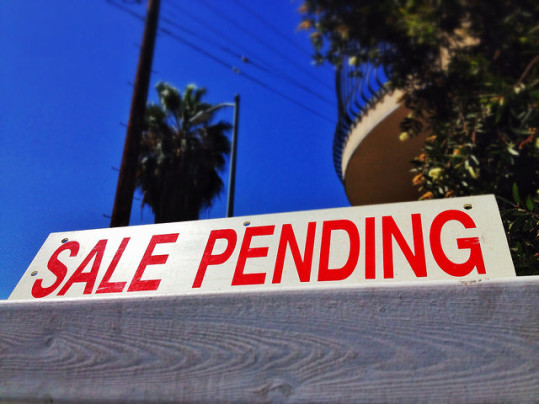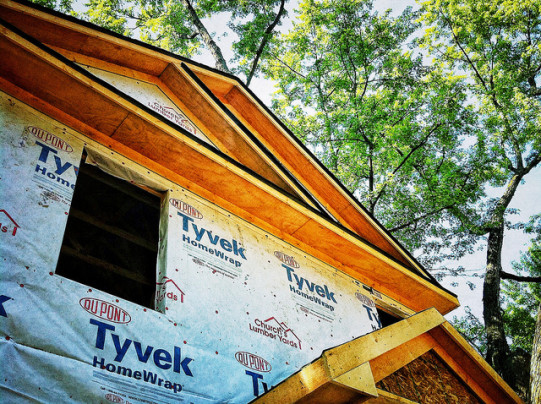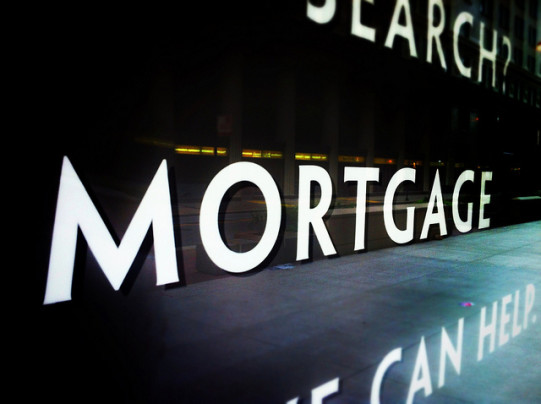Fannie Mae’s Economic and Strategic Research Group releases an updated outlook for the economy and housing market each month. Their forecast provides a good view of where things are and where they’re headed. According to this month’s release, recent economic volatility may cause heightened concerned on Wall Street but shouldn’t negatively affect economic growth or the progress the housing market has made over the past year. In fact, Fannie Mae points to an uptick in consumer spending, full-time employment surpassing its pre-recession peak, and the fact that average hourly earnings have increased as an indication that the economy will remain on track through the end of the year. Their housing market forecast also remains mostly unaffected by recent data. “Continued strong performance of year-to-date home sales and modestly weakening leading indicators confirm that our prior forecast of existing home sales this year remains valid,” Doug Duncan, Fannie Mae’s chief economist, said. “However, lower actual and projected cash sales led us to revise slightly higher purchase mortgage originations.” In fact, Duncan believes total mortgage originations this year will be up approximately 25 percent over last year. More here.
Archive for September 2015
Pending Home Sales Slip But Remain Strong
The National Association of Realtors’ Pending Home Sales Index measures the number of contracts signed to buy homes each month. Because it measures contract signings – and not closings – it is a good indicator of future home sales. In August, the index fell 1.4 percent. Despite the dip, however, it remains 6.1 percent above last year’s level and has now risen over year-before levels for 12 consecutive months. Lawrence Yun, NAR’s chief economist said, even with the slight decline, demand is outpacing housing supply, which will continue to put upward pressure on home prices. “Pending sales have leveled off since mid-summer, with buyers being bounded by rising prices and few available and affordable properties within their budget,” Yun said. “Even with existing-housing supply barely budging all summer and no relief coming from new construction, contract activity is still higher than earlier this year and a year ago.” In other words, despite a slightly more challenging environment for buyers, demand is still healthy. In fact, a closer look at the numbers reveals that pending home sales were actually up in the West and unchanged from last month in the Midwest. Which means, August’s declines were confined to the South and Northeast. More here.
Survey Reveals Homeowners’ Top Complaints
When shopping for a house to buy, most prospective buyers will make a list of features they’d like – whether it’s an open floor plan or a place for entertaining. They will also, most likely, have a list of things they’d like to avoid. But despite all the careful thought and consideration they may’ve put into finding the perfect home, once they’ve settled in there will inevitably be a few things they never knew they needed and some issues they hadn’t even thought of during the house hunt. Because of this, it can be helpful for home shoppers to get a feel for what current homeowners most dislike about their home and neighborhood. Fortunately, a recent survey conducted by HSH.com polled Americans and asked them what most upsets them about their current living arrangement. Not surprisingly, when it comes to the home itself, the number one complaint was a lack of storage. Too much maintenance, insects, wildlife, and being too old, not updated, and small were all among the top complaints. Among the more unexpected responses, 25 percent named water pressure as a problem, while 30 percent said lack of parking. When it comes to the neighborhood and their neighbors, there are few things that don’t ruffle feathers. Noisy, messy neighbors who are unfriendly are an issue for most Americans. Participants also complained about too many teenagers, too much traffic, and their neighbors’ vehicles, pets, and kids. More here.
New Home Sales Beat Expectations In August
Sales of newly built single-family homes rose 5.7 percent in August, according to new estimates released by the U.S. Census Bureau and the Department of Housing and Urban Development. The improvement puts new home sales 21.6 percent above last year’s level and represents the fastest sales pace in seven years. After falling in June, sales have rebounded strongly. In fact, August’s report includes an upward revision of July’s estimate, which was initially reported as a 5.4 percent increase. It also surpasses economists’ expectations for the month. New home sales are an important indicator of – not only the health of the housing market – but also the overall economy. Strengthening sales are an indication of increasing economic activity, as well as a more stable job market. But though this summer’s sales gain can, in part, be attributed to improved employment conditions, it is also fueled by mortgage rates that remain low by historical standards. Also in the report, the median sales price of new houses sold in August was $292,700; the average sales price was $353,400. At the current sales pace, there was a 4.7-month supply of new homes available for sale. More here.
Mortgage Activity Surges As Rates Dip
According to the Mortgage Bankers Association’s Weekly Applications Survey, the average contract interest rate on 30-year fixed-rate mortgages and those backed by the Federal Housing Administration were unchanged last week from the week before. Rates on jumbo loans and 15-year fixed-rate mortgages both fell, however, during a week when there was considerable volatility due to the Federal Reserve’s decision not to raise interest rates. “We saw significant rate volatility last week surrounding the FOMC meeting, and rate declines toward the end of the week likely drove applications from both prospective home buyers and borrowers looking to refinance,” Mike Fratantoni, MBA’s chief economist, said. “The 30-year fixed-rate remained unchanged over the week even though there was substantial intra-week fluctuation, but we saw rate decreases in other loan products like the 15-year fixed, 5/1 ARM, and 30-year jumbo.” Fluctuating rates led to a spike in application demand, with refinance activity up 18 percent over the previous week and purchase application demand – which is a good indicator of future home sales – up 9 percent, reaching its highest level since June. The MBA’s weekly survey has been conducted since 1990 and covers 75 percent of all retail residential mortgage applications. More here.
Rising Equity Benefits Buyers And Sellers
Equity refers to the value of a property minus the amount owed on the mortgage. In short, having positive equity means your home is worth more than you paid for it. In other words, it’s good news. That’s why CoreLogic’s second quarter equity report is an encouraging sign for both current homeowners and potential buyers. According to the report, 759,000 properties regained equity in the second quarter, raising the number of mortgages that are now lower than their property’s value to nearly 46 million, or 91 percent of all mortgaged properties. That is a big improvement over where things were following the housing crash, when millions of homeowners saw their homes lose value and were plunged into negative equity. CoreLogic’s CEO and president, Anand Nallathambi, says the negative equity epidemic is lifting for much of the country. “The biggest reason for this improvement has been the relentless rise in home prices over the past three years which reflects increasing money flows into housing and a lack of housing stock in many markets.” But, though the number of homes available for sale has been low in some markets, a rising number of current homeowners with positive equity could mean more homes put up for sale, giving prospective buyers more choices and reducing the rate of price gains. More here.
Sales Slow As Summer Season Winds Down
New estimates from the National Association of Realtors show a dip in the number of previously owned homes sold in August compared to the month before. Total existing-home sales – including single-family homes, townhomes, condominiums, and co-ops – fell 4.8 percent from July, though they remain 6.2 percent above last year’s pace. “Sales activity was down in many parts of the country last month – especially the South and West – as the persistent summer theme of tight inventory levels likely deterred some buyers,” Lawrence Yun, NAR’s chief economist, said. “The good news for the housing market is that price appreciation the last two months has started to moderate from the unhealthier rate of growth seen earlier this year.” In fact, the median existing-home price for all housing types in August was $228,700, 4.7 percent above last year. Also in the report, the number of homes available for sale rose in August. Total housing inventory was up 1.3 percent at the end of the month. Rising inventory offers potential home buyers more choices, in addition to helping moderate the rate at which prices increase. More here.







